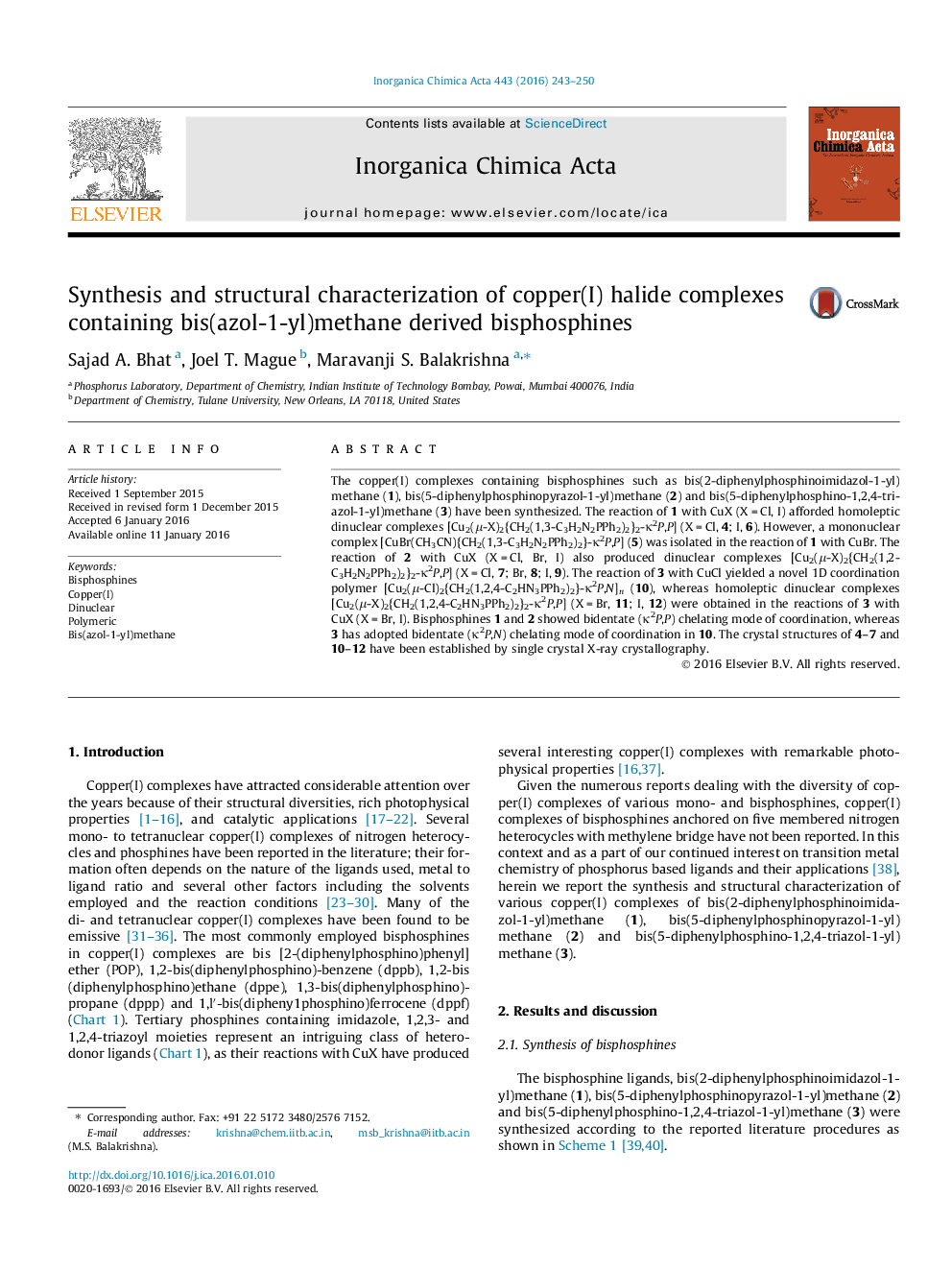| Article ID | Journal | Published Year | Pages | File Type |
|---|---|---|---|---|
| 1306441 | Inorganica Chimica Acta | 2016 | 8 Pages |
•Copper chemistry of new bisphosphanes has been described.•Ligands show both bridging and chelating coordination modes.•Ligands show both phosphorus and nitrogen coordination.
The copper(I) complexes containing bisphosphines such as bis(2-diphenylphosphinoimidazol-1-yl)methane (1), bis(5-diphenylphosphinopyrazol-1-yl)methane (2) and bis(5-diphenylphosphino-1,2,4-triazol-1-yl)methane (3) have been synthesized. The reaction of 1 with CuX (X = Cl, I) afforded homoleptic dinuclear complexes [Cu2(μ-X)2{CH2(1,3-C3H2N2PPh2)2}2-κ2P,P] (X = Cl, 4; I, 6). However, a mononuclear complex [CuBr(CH3CN){CH2(1,3-C3H2N2PPh2)2}-κ2P,P] (5) was isolated in the reaction of 1 with CuBr. The reaction of 2 with CuX (X = Cl, Br, I) also produced dinuclear complexes [Cu2(μ-X)2{CH2(1,2-C3H2N2PPh2)2}2-κ2P,P] (X = Cl, 7; Br, 8; I, 9). The reaction of 3 with CuCl yielded a novel 1D coordination polymer [Cu2(μ-Cl)2{CH2(1,2,4-C2HN3PPh2)2}-κ2P,N]n (10), whereas homoleptic dinuclear complexes [Cu2(μ-X)2{CH2(1,2,4-C2HN3PPh2)2}2-κ2P,P] (X = Br, 11; I, 12) were obtained in the reactions of 3 with CuX (X = Br, I). Bisphosphines 1 and 2 showed bidentate (κ2P,P) chelating mode of coordination, whereas 3 has adopted bidentate (κ2P,N) chelating mode of coordination in 10. The crystal structures of 4–7 and 10–12 have been established by single crystal X-ray crystallography.
Graphical abstractThis paper describes the synthesis and structural characterization of copper(I) halide complexes of bis(1,2,4-triazol-1-yl)methane, bis(imidazol-1-yl)methane and bis(pyrazol-1-yl)methane derived bisphosphines.Figure optionsDownload full-size imageDownload as PowerPoint slide
